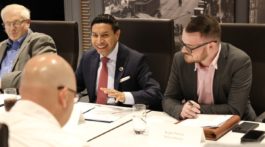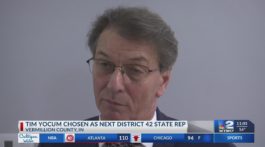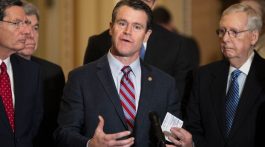by Rep. Jim Banks
Recent news surrounding a potential President Donald Trump-Kim Jong Un summit revives an alternating cycle of provocation and negotiation that started more than 30 years ago. It should encourage our policy, strategy and planning developers to shift into overdrive to address the complex problems we will face someday, possibly soon.
However, the complexity of these problems has been overcome before by strong Hoosier leadership. Indiana Sen. Dick Lugar had the keen foresight to look over the horizon at similar dangers as the Soviet Union was crumbling and posed a potentially catastrophic weapons of mass destruction threat to the world. In a bipartisan fashion, he teamed with Georgia Sen. Sam Nunn to develop the Cooperative Threat Reduction Program to eliminate the hazards of the Soviet Union’s nuclear, chemical and biological programs.
Today, we face similar threats on the Korean peninsula.
While recent discussion has been focused on denuclearization, a comprehensive planning effort should address all of North Korea’s weapons of mass destruction programs alongside political, economic and social concerns. While these considerations are unprecedented, the planning should incorporate the applicable lessons from the post-Soviet era and those elements we are hopefully learning in stabilization operations currently under way.
The Trump administration has focused on moving toward Korean unification through its pressure campaign. Whether that campaign was the direct cause to bring Kim Jong Un to request a summit earlier this spring or not, there is no doubt it played a part. Ratcheting up the pressure campaign even more must still be a significant element until real concessions are made.
Increasing sanctions against North Korea with allies and partners to further isolate the contemptible regime is essential to getting to the final goal. The close alliances with South Korea and Japan will be critical to achieving any success in the region. Both South Korean President Moon Jae-in and Japanese President Shinzo Abe have immediate concerns, having lived under constant threats by North Korea for too long.
Even if the nuclear threat is removed, chemical weapons, and possibly biological weapons, will persist if not addressed. The scope of chemical weapons alone is staggering, with estimates ranging up to 5,000 metric tons available to create cataclysmic damage to Seoul and beyond.
Thankfully, the Nunn-Lugar Cooperative Threat Reduction Program has provided our country with an excellent example of how to dismantle nuclear, chemical and biological threats. The two lawmakers’ ideas on eliminating the most dangerous threats in the former Soviet Union should be used as a starting point with North Korea if a peaceful reunification comes closer to reality.
The scope of the nuclear weapons program in North Korea is far less than we faced in the former Soviet Union, while the North Koreans’ chemical weapons program may be commensurate with the Soviets’ program. It remains unknown how expansive the North Korean biological weapons program is, but the expertise to dismantle all programs certainly exists.
To better address these threats, I recently sponsored report language in the fiscal year 2019 National Defense Authorization Act to determine ways to strengthen the successful Cooperative Threat Reduction Program and adapt it for future proliferation threats. Under the best conditions, a revised Cooperative Threat Reduction Program would be suited for what will be the former North Korea reunifying with South Korea. While denuclearization has become the focus of discussion over the last few months, reinforcing this long cycle of provocation and negotiation, it is time to break the paradigm with measured steps to achieve a goal that has been set since 1953.
As recent international diplomatic activities have provided hope for near-term advances, and with the 65th anniversary of the Korean Armistice approaching next month, it is imperative to plan for success should it be achieved more quickly than anticipated.
Jim Banks is a Congressman representing Indiana’s 3rd District.
Photo: Asian Review














